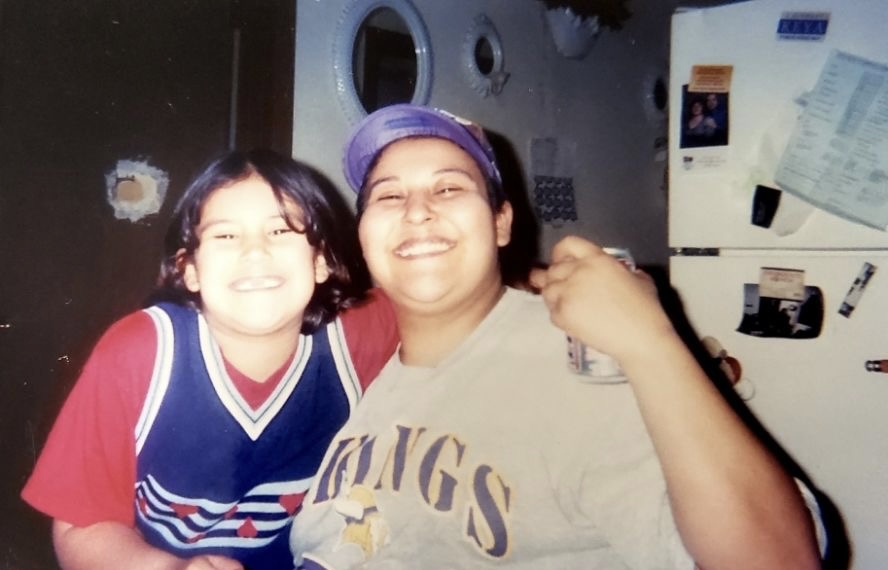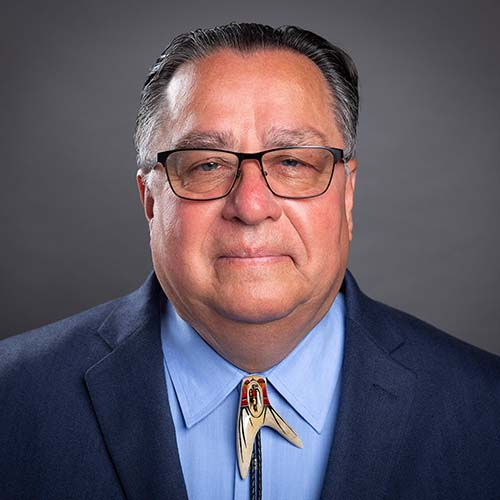
- Details
- By Levi Rickert
On May 4, Native News Online reported news about the positive DNA identification of Melissa “Missy” Ann Poitra, a Turtle Mountain Band of Chippewa tribal citizen who had been missing for 15 years. Her remains were discovered in a self-storage unit five years ago in Durham, North Carolina, some 1,600 miles from home.
The body was only discovered by a cleaning company clearing out the storage unit after the person who rented it died.
By coincidence, the article was published one day before National Awareness Day for Missing and Murdered Indigenous Persons acknowledged on May 5.
Police in Durham classified her as being a White woman. When her family spoke to the Durham Police Department they were treated with a dismissive attitude. But the family was persistent in their pursuit to discover if the remains were Poitra’s.
It took another five years for her body to be positively identified by law enforcement through DNA tests. The results came back on April 23, 2021. Melissa’s father was notified by the Durham Police four days later.
The family contacted Native News Online to tell the story.
This past Wednesday, Durham police held a press conference to discuss the case. They say they are treating the case as a homicide and offered little more details.
The details of Melissa’s tragic death make her a statistic among thousands of other missing and murdered Indigenous women.
Across Indian Country, Indigenous women are murdered at a rate 10 times higher than White women. Murder is the third leading cause of death for Indigenous women, according to the Centers for Disease Control and Prevention (CDC). More than four of five Indigenous women have experienced violence in their lifetimes. More than half Indigenous women —56.1 percent—experience sexual violence.
The story of Melissa’s journey home brings attention to three key elements of the missing and murdered Indigenous persons epidemic: Misclassification, law enforcement dismissiveness and family persistence.
Misclassification of Indigenous Persons
When Melissa’s body was first discovered in the storage unit, she was misclassified as being a White woman. Sadly, racial misclassification is a frequent occurrence, which often prevents accurate tracking of cases of Indigenous victims.
The misclassification of Native persons indicates there is an undercount of missing and murdered Indigenous persons, which means the epidemic is worse than we imagine.
Racial misclassification can occur for different reasons. Law enforcement often classify individuals based on assumptions about their physical appearance. If a Native woman is of mixed race, she may be wrongly identified as White or Black. Through colonial times, American Indians took Hispanic last names, contributing to misclassification. Another reason misclassification occurs is because federal or state governments may not recognize tribes.
Law enforcement dismissiveness
In the vast majority of missing and murdered Indigenous persons cases, law enforcement is frequently seen as dismissive to families of the missing and murdered.
Sometimes law enforcement denies there is a problem of missing and murdered Indigenous persons.
"Don't wait for law enforcement," Lissa Yellowbird-Chase said at a press conference for Olivia Lone Bear, a mother of five who was murdered in 2017 near the Fort Berthold Reservation in North Dakota. "People have this false sense of security that when you file a missing person report, all of the officers and detectives jump in their cars and run all over the place looking for this person. That's simply not true."
In the case of Melissa, the Durham Police were dismissive because of the misclassification. They thought the remains were those of a White woman. Because the family that reported her missing is Indigenous, they thought the remains could not be hers.
Family persistence
Jessica Poitra, Melissa’s sister, is a teacher on the Turtle Mountain Indian Reservation. During the time her sister was missing, Jessica thought about finding her. After an online article was published in 2016 about unidentified woman in Durham being discovered in a plastic tote concealed in a self-storage unit, she had suspicions that the person was her sister.
Durham Police at the time named the remains Durham Jane Doe.
“The woman had the same gap in her teeth as my sister did and we knew it was my sister,” Jessica told Native News Online. “But the police wouldn’t believe us.”
The family persisted. They asked the Durham Police repeatedly to perform a DNA analysis, but the police seemed to drag their feet. It took five years of persistence by Melissa’s family.
Melissa’s long journey home to North Dakota—both in time and distance—will end soon. Her remains are due to return this week to Turtle Mountain.
For her loved ones, Melissa is not a statistic. She is family.
More Stories Like This
Extending the Affordable Care Act Is a Moral Imperative for Indian CountryAll Is Fair in … War?
Why Federal Health Insurance Policy Matters to Cherokee Nation
The Absence of October's Job Report Shows Why Native American Communities Need Better Data
Tribal IDs Are Federally Recognized. ICE Agents Are Ignoring Them.
Help us defend tribal sovereignty.
At Native News Online, our mission is rooted in telling the stories that strengthen sovereignty and uplift Indigenous voices — not just at year’s end, but every single day.
Because of your generosity last year, we were able to keep our reporters on the ground in tribal communities, at national gatherings and in the halls of Congress — covering the issues that matter most to Indian Country: sovereignty, culture, education, health and economic opportunity.
That support sustained us through a tough year in 2025. Now, as we look to the year ahead, we need your help right now to ensure warrior journalism remains strong — reporting that defends tribal sovereignty, amplifies Native truth, and holds power accountable.
 The stakes couldn't be higher. Your support keeps Native voices heard, Native stories told and Native sovereignty defended.
The stakes couldn't be higher. Your support keeps Native voices heard, Native stories told and Native sovereignty defended.
Stand with Warrior Journalism today.
Levi Rickert (Potawatomi), Editor & Publisher

